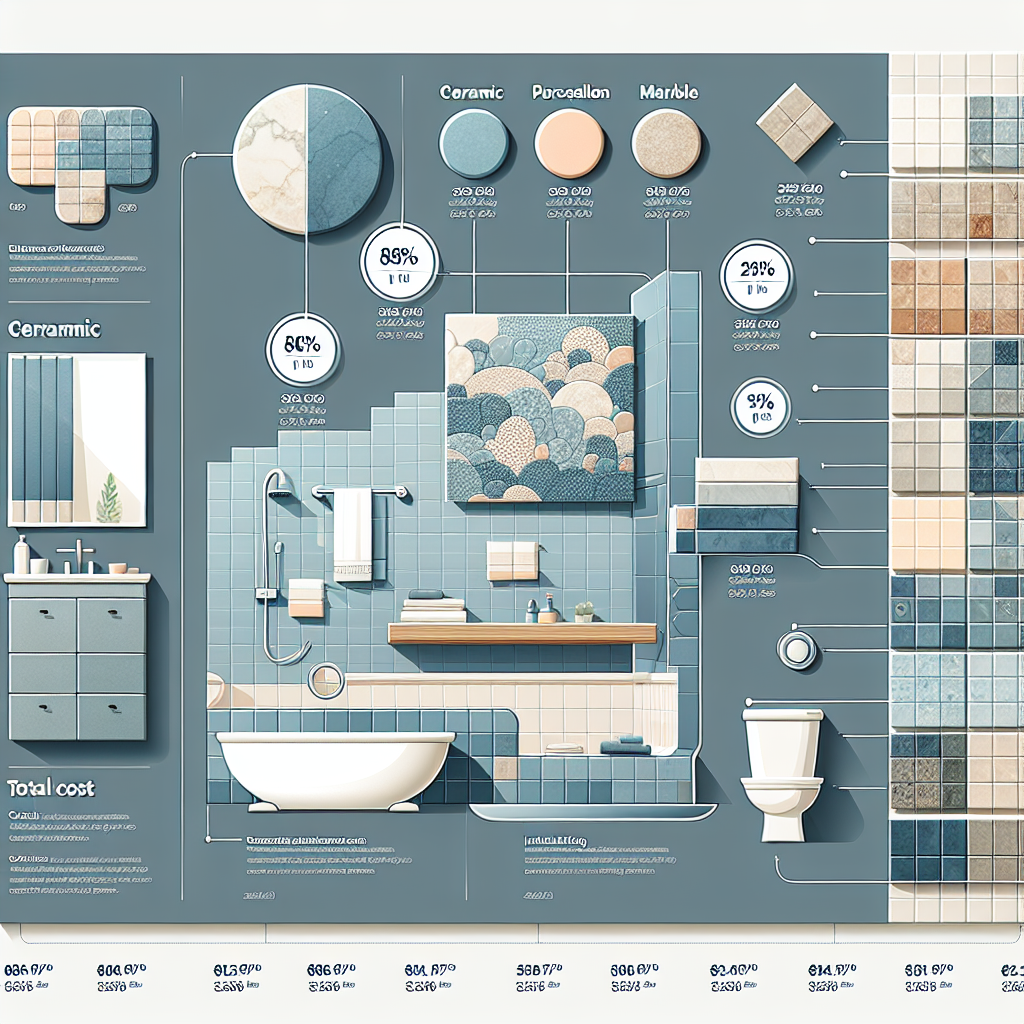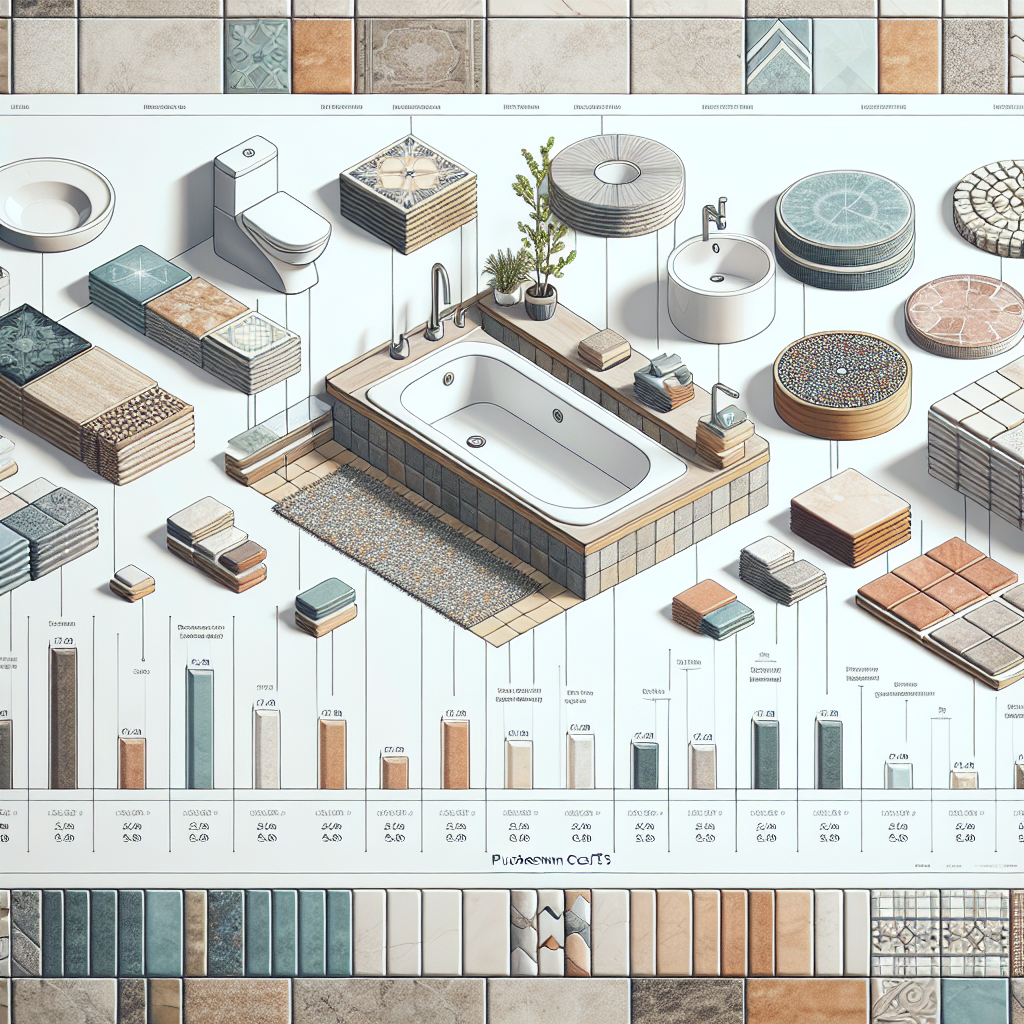Bathroom Tile Selection and Installation Cost Breakdown

When it comes to renovating a bathroom, one of the most important decisions you’ll make is selecting the right tiles. Not only do tiles play a crucial role in the overall aesthetics of the space, but they also need to be durable and functional. Additionally, understanding the cost breakdown of tile selection and installation is essential for budgeting purposes. In this article, we will explore the various factors that influence the cost of bathroom tile selection and installation, providing valuable insights to help you make informed decisions.
Factors Affecting Bathroom Tile Selection and Installation Cost
Before delving into the cost breakdown, it’s important to understand the factors that influence the overall expenses of bathroom tile selection and installation. These factors include:
- Tile Material: The type of tile you choose will significantly impact the cost. Common options include ceramic, porcelain, natural stone, and glass. Each material has its own price range, with natural stone being the most expensive.
- Tile Size and Design: Larger tiles generally cost more than smaller ones due to the increased material required. Additionally, intricate designs or patterns may require more labor and expertise, leading to higher installation costs.
- Tile Quality: Higher-quality tiles tend to be more expensive but offer better durability and longevity. It’s important to strike a balance between cost and quality to ensure you’re getting the best value for your money.
- Tile Installation Method: The installation method chosen can impact the overall cost. Traditional mortar installation is generally more affordable, while newer methods like tile adhesive or epoxy can be pricier but offer faster installation and better results.
- Surface Preparation: The condition of the bathroom floor or walls before tile installation can affect the cost. If extensive repairs or leveling are required, it will add to the overall expenses.
- Additional Features: Extras such as tile borders, accents, or custom designs will increase the cost. These features add a unique touch to the bathroom but come at an additional expense.
Cost Breakdown of Bathroom Tile Selection and Installation
Now that we understand the factors influencing the cost, let’s break down the expenses involved in bathroom tile selection and installation:
1. Tile Material Cost
The cost of tiles varies depending on the material chosen. Here is a general price range for common tile materials:
- Ceramic Tiles: $1 to $5 per square foot
- Porcelain Tiles: $3 to $10 per square foot
- Natural Stone Tiles: $5 to $30 per square foot
- Glass Tiles: $7 to $30 per square foot
It’s important to note that these prices are approximate and can vary based on factors such as brand, design, and location.
2. Tile Installation Labor Cost
The labor cost for tile installation depends on various factors, including the complexity of the project, the size of the bathroom, and the experience of the contractor. On average, you can expect to pay between $5 and $15 per square foot for labor.
For example, if you have a bathroom measuring 100 square feet, the labor cost for tile installation would range from $500 to $1,500.
3. Surface Preparation Cost
If your bathroom floor or walls require extensive preparation before tile installation, it will add to the overall cost. Surface preparation may involve removing old tiles, repairing damaged areas, or leveling the surface.
The cost of surface preparation can vary depending on the extent of the work required. On average, you can expect to pay between $1 and $3 per square foot for surface preparation.
4. Additional Features Cost
If you want to add extra features to your bathroom tiles, such as borders, accents, or custom designs, it will increase the overall cost. The price of these additional features depends on the complexity of the design and the materials used.
As a rough estimate, you can expect to pay an additional 10% to 20% of the total tile cost for these extra features.
5. Miscellaneous Costs
In addition to the main expenses mentioned above, there may be other miscellaneous costs to consider. These can include the cost of tile adhesive, grout, sealant, and any necessary tools or equipment.
It’s important to factor in these additional costs to ensure an accurate budget for your bathroom tile selection and installation project.
Frequently Asked Questions about Bathroom Tile Selection and Installation Cost Breakdown
1. What is the most cost-effective tile material for a bathroom?
The most cost-effective tile material for a bathroom is ceramic. Ceramic tiles are affordable, durable, and available in a wide range of designs and colors. They offer a good balance between cost and quality, making them a popular choice for many homeowners.
2. How can I save money on bathroom tile installation?
To save money on bathroom tile installation, consider the following tips:
- Shop around for the best deals on tiles and compare prices from different suppliers.
- Opt for standard-sized tiles instead of custom sizes, as they are generally more affordable.
- Choose a simple tile design that doesn’t require intricate cuts or patterns.
- Consider DIY installation if you have the necessary skills and experience.
- Get multiple quotes from different contractors to ensure you’re getting a competitive price.
3. Is it worth investing in high-quality tiles?
Investing in high-quality tiles is worth considering, especially if you plan to stay in your home for a long time. High-quality tiles offer better durability, resistance to wear and tear, and a longer lifespan. While they may be more expensive upfront, they can save you money in the long run by reducing the need for frequent replacements or repairs.
4. What is the average timeline for bathroom tile installation?
The timeline for bathroom tile installation depends on various factors, including the size of the bathroom, the complexity of the design, and the availability of the contractor. On average, you can expect the installation process to take anywhere from a few days to a couple of weeks.
5. Can I install tiles over existing tiles to save money?
While it is possible to install new tiles over existing tiles, it is generally not recommended. Installing tiles over existing tiles can lead to issues with height differences, stability, and adhesion. It’s best to remove the old tiles and properly prepare the surface before installing new ones to ensure a long-lasting and high-quality result.
Summary
Selecting and installing bathroom tiles involves various factors that influence the overall cost. These factors include the tile material, size and design, quality, installation method, surface preparation, and additional features. Understanding the cost breakdown can help you make informed decisions and budget effectively for your bathroom renovation project. Remember to consider the long-term benefits of investing in high-quality tiles and always get multiple quotes from contractors to ensure a competitive price. With careful planning and consideration, you can create a beautiful and functional bathroom that suits your style and budget.

